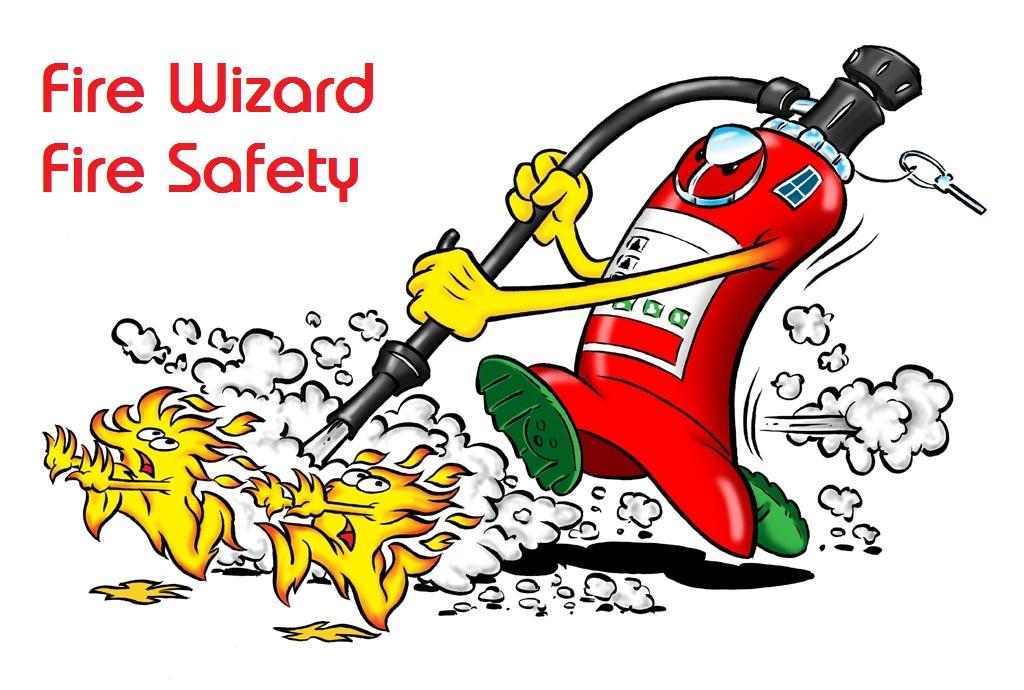-
Posts
2,703 -
Joined
-
Last visited
Everything posted by AnthonyB
-
If that combination of closer and installation method are approved by the fire door manufacturer you may not need to change anything, most fire door companies would want you to replace the frame now it's been damaged.
-
No, if the original hinges approved at the time of installation are in good order and the correct rating for the weight for the door they should be fine - CE marking on new products is not retrospective. Sadly poorly trained risk assessors and unscrupulous fire door companies are costing leaseholders lots of money on things that add no fire real safety advantage.
-
That's one I don't have in my collection - if not keeping it message me! It's an early example of the aerosol can type extinguisher brought to market from the start of the 1960's for the domestic, automotive and leisure market. It's similar to the more well known brands of this type such as Hero & Firemaster (the latter which continued trading until the 2000's) and by the method of operation & can design is certainly one of the earlier ones. It uses Sodium Bicarbonate based dry powder under CO2 pressure in a sealed aerosol can which is pierced by striking the knob allowing the entire contents to be discharged on the fire (it's 'total discharge' so once started you can't stop it) to extinguish the fire by chemical inhibition. Others of this type used vapourising liquids, sometimes recognised extinguishing liquids such as Carbon Tetrachoride, Chlorobromomethane and for several decades the very effective Bromochlorodifluoromethane - others used general (cheaper) refrigerant freons that were less effective on fires. Until the mid 1980's there was manufacturing, test and performance British Standard at which point BS6165 was introduced to regulate these items - before then these products were of varying performance and had a bad name (many were too small to be of much use) and usually fared poorly in consumer and motorist journal practical tests, although Firemaster usually fared better as they followed as best they could existing standards for 'proper' extinguishers (BS1721 for vapourising liquids, BS3465 for powder, later BS5423 for all types) I've not come across the brand that yours is, it obviously didn't succeed too well, although it looks a reasonable size and could have been of some effect on a small fire.
-

Solid doors vs curtains in classroom store areas?
AnthonyB replied to JoC's topic in Fire Safety in Schools
Is there any higher risk items in the store such as an electrical distribution board? -
It sounds on the surface completely unnecessary. External doors usually only need to be fire doors if in a block of flats where there are several flats with an open deck approach where you have only one stair, or where they open onto an external stair (other than the top floor). There are potentially other situations that might arise if I saw the site, but generally if it doesn't fall into the above then 99% of the time it's unnecessary, usually prompted by unscrupulous fire door companies or poorly trained fire risk assessors. Ask for the fire risk assessment (even with no internal common areas there should be one for the external structure) and point out that you will take the matter to a First Tier Tribunal if they try and impose it.
-
Yes, a protected route must not just be clear of obstruction but also free from combustible materials. Also a 3 storey commercial building in the UK will not usually be sprinkler protected but just have smoke detection.
-

Guidance Documents for Childrens Home
AnthonyB replied to AlwaysLearning's topic in Fire Risk Assessments
You would need to review your FRA, but there should be no major impact beyond that you've said depending on the use of the room. You may need to consider emergency lighting if part of an escape route. -
Hi, No. Everything you need to know for a small building is in here https://www.gov.uk/government/publications/making-your-small-non-domestic-premises-safe-from-fire
-

Fire door regs for 3-storey flat blocks under 11 metres
AnthonyB replied to Ian London's topic in Fire Doors and Accessories
Unless you don't have a protected hallway approach (30 minute non self closing fire doors to internal rooms in the flat that open onto your internal hall which would also be 30 minute fire resistant, so that there are 2 x 30 minute doors between the risk room & communal areas) then there is nothing in guidance for new builds or existing legacy properties that routinely requires a 60 minute front door. Unfortunately there is a lot of misinformation & poorly skilled people in the residential fire safety sector and if every block of flats took it's freeholder to First Tier Tribunal over excessive fire door, fire alarm and emergency light issues & resulting costs they'd have little time to hear traditional FTT cases! -
Do you mean the actual electricity meter - If so you would treat it an any electrical meter as appropriate depending on location & whether it's plastic or metal. If you mean the remote display then you need no special precautions
-

Existing Notional Fire Door Remedial Work or Replacement?
AnthonyB replied to nigelh's topic in Fire Doors and Accessories
Based on the guidance cited by Neil and the information you give then original 1989 fire doors still in original working order would be tolerable. Perko chains are frowned on as they can't be adjusted and over time loose the ability to close the door fully flush in frame from all angles as required and if failing must be replaced and ideally should be replaced with EN1154 compliant closers (the biggest issue with the fire doors at Grenfell wasn't them being original 70's doors but that many did not self close). Some old rebate only doors can indeed be upgraded with intumescent strips and cold smoke seals & this is usually indicated in bigger blocks and isn't essential in small blocks like yours. So, as the FRA correctly says your existing doors are fine. The only slight (common) error is that they think that as under 11m the Responsible Person for the block doesn't have to check flat front doors - they do under Article 17 of the Fire Safety Order as amended by the Fire Safety Act, just that they don't have to have checked every single one (or made best endeavours to) in a 12 month period as per the Fire Safety (England) Regulations, just aspire to getting round them all in a year. I cover Yorkshire if you need any further assistance with this matter. -
It's been required for a very long time for external stairs and roof escapes under previous legislation & would usually be required currently where a risk assessment deems it necessary. The emergency lighting standard BS5266 requires lighting from the exterior of final exits along the route to a place of ultimate safety. In certain situations borrowed lighting e.g. street lights can be counted towards lighting requirements
-

How to carry out as flick test to communal passageways
AnthonyB replied to a topic in Emergency Lighting
Emergency light test switches can be wired up so that all lighting has power cut as if the MCB was tripped, however some are wired only to cut the supply to each EL individually for H&S reasons so as not to have a safety risk (also a convenience issue) by loss of lighting. Where the switches are set up like yours are it's not uncommon to mark the fittings with emergency packs with self adhesive coloured dots so it's easier to spot which ones you are checking. -
Depending on the age of the block and if the doors are the original fire doors and self closing in good working order then there is absolutely no retrospective requirement for them to be replaced, particularly as low rise - this is clearly stated in the Government guidance and unfortunately there are poorly trained risk assessors and remedial work hungry fire door companies that don't realise this. If not fire doors to any standard or beyond viable repair then you would need a replacement.
-
Yes - but they aren't cheap! https://doortechnik.co.uk/glass-doors?gad_source=1&gclid=Cj0KCQiAj9m7BhD1ARIsANsIIvClxv0V6qE2tcX_ewZ4w8khG-ZApH82FZTsuvJnm7ZMEZFcHMBGGfkaAj1OEALw_wcB
-
Looks like a Banshee Excel and certainly isn't old.
-
Display materials and decorations Displays are often located in corridors and in entrance foyers, and generally comprise materials such as paper, cardboard and plastic which provide a means for the rapid spread of fire. You should evaluate what material could ignite first and what would cause the fire to develop and spread, and assess how materials used in temporary or permanent displays would interact with surface linings and position them accordingly. To reduce the risk of fire spread, you should consider the following: • avoid the use of displays in corridors and foyers; • minimise the size and number of display areas to discrete, separated areas; • do not put displays down stairways which are part of a designated escape route or where there is only one direction of escape (i.e. dead-end conditions); • treat displays with proprietary flame-retardant sprays; • the use of display boxes; • keep displays away from curtains, light fittings and heaters; • keep displays away from ceiling voids which may lack fire barriers; • ensure that there are no ignition sources in the vicinity; and • ensure displays do not obstruct escape routes or obscure fire notices, fire alarm call points, firefighting equipment or escape signs https://www.gov.uk/government/publications/fire-safety-risk-assessment-educational-premises
-
A single available exit route can only be used by a maximum of 60 persons and gangways must be available at all times in halls. If you feel there is a serious risk then your local fire service are the enforcement body for fire safety legislation, which schools are not exempt from. https://www.gov.uk/government/publications/fire-safety-risk-assessment-educational-premises https://www.gov.uk/government/publications/fire-safety-risk-assessment-small-and-medium-places-of-assembly
-
If you want to see a selection of old sounders there are some featured in this:
-
How old is the building? Why not ask the fire service - they may be happy as it is and if not will give you some pointers as to what would suit. Whilst not responsible for your FRA they are still permitted and indeed have a statutory duty to provide certain fire safety advice
-
I'd be asking why they all need full replacement rather than repair first and checking what minimum standard is required by the FRA. I see too many doors replaced where government guidance & risk assessments permit original doors, repairs and upgrades. I've seen that price range quoted around before a few times.
-

Seeking opinions regarding fire door installation
AnthonyB replied to Zoy3579's topic in Fire Doors and Accessories
It depends on the size and depth of the gap - different products are available depending on the dimensions. Generally, for gaps up to 15mm you should completely fill the gap to the full depth of the door frame with tightly packed mineral wool. Make allowance though for a 10mm deep capping of intumescent acryilic sealant on both sides. The sealant should cap the mineral wool for a 10mm depth between the frame and the wall and not just to cover the surface of the gap. Intumescents are gap fillers and need surfaces to expand against under pressure, if applied to just a flat open surface they will just foam and fall away so they need to be inside the gap. This should be done all around the door frame to wall gap on both sides. Where the gap is up to 20mm, follow the same method as above but use tightly fitted 15mm timber or MDF architraves to overlap both frame and wall by at least 15mm. For small gaps such as 3mm to 6mm where use of mineral wool is impractical you should fill the gap as deep as is practically possible with intumescent acrylic sealant. For especially large gaps line the opening with continuous solid timber and fill any remaining gaps as above. (Gap filling information from previous posts on the subject by Neil Ashdown who regularly assists with fire door queries on here) -
If the dampers are of the intumescent honeycomb or fusible link shutter type for fire then they are likely to have complied at the time of install. Retrospective provision of duct detection and conversion to duct detector activated smoke & fire dampers is not retrospective (nor is BS5839-1) unless the risk posed by them is intolerable, which would be based in part on where the duct goes and where it's inlets and outlets are. If your common area FRA doesn't require it then you wouldn't be obliged to undertake this, but you do have to coordinate fire safety with other responsible persons - if they want it but your assessment doesn't require it you could propose to undertake the work on the basis that the tenant pays for it.



